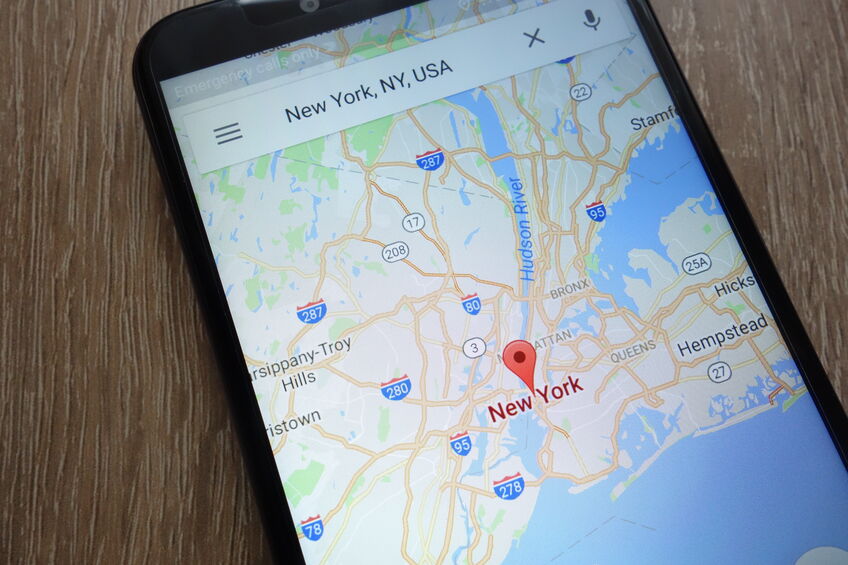Relying on Google Maps to Verify a Merchant’s Business? Be Careful
 If a Google Maps listing inspired confidence in a small business loan applicant’s existence, then you may not know just how many people try to create fake profiles. In 2018, for example, Google acknowledged that it had removed more than 3 million fake business listings from its platform while simultaneously disabling 150,000 accounts that created them. At the time, industry experts told the Wall Street Journal that Google’s efforts were hardly making a dent, estimating that on any given business day, 11 million businesses listed on Google Maps were fake.
If a Google Maps listing inspired confidence in a small business loan applicant’s existence, then you may not know just how many people try to create fake profiles. In 2018, for example, Google acknowledged that it had removed more than 3 million fake business listings from its platform while simultaneously disabling 150,000 accounts that created them. At the time, industry experts told the Wall Street Journal that Google’s efforts were hardly making a dent, estimating that on any given business day, 11 million businesses listed on Google Maps were fake.
Some fake business types are more common than others. Sources told the WSJ that contractors, electricians, towing and car repair services, movers, and lawyers ranked among those most used in a scheme.
Since then, efforts to trick Google have become even more prolific. Google revealed that more than 7 million fake business profiles were removed in 2021, more than double that of three years earlier. The company also caught schemers in the act of trying to create new fake business listing more than 12 million times in 2021.
These results should be alarming for a small business lender that is unable to conduct an on-site visit or mobile site inspection with an applicant. For smaller sized applications, a cursory check on Google Maps or Google Street View to scope out the business location may be the only visual analysis that an underwriter conducts. Mismatches on Street View can be explained away by claiming that the Google car hadn’t come by recently to refresh the pictures or that the signs on the building hadn’t been changed or gone up yet, but the listing itself on Google Maps might imply that the business must be there, even if the Google car hadn’t come by lately. Obviously, as the data shows, that’s not perfectly reliable.
Online reviews, meanwhile, have already been the subject of skepticism for years, with there being allegations of companies manipulating reviews. Savvy searchers might read such attestations and conclude that a company’s positive testimonials are fake and perhaps the products or services being offered are not as good as they’re being artificially acclaimed to be. Google said that it removed 95 million “policy-violating reviews” in 2021. That’s on top of blocking 190 million photos and 5 million videos.
 “Every day we receive around 20 million contributions from people using Maps,” Google said in its announcement “Those contributions include everything from updated business hours and phone numbers to photos and reviews. As with any platform that accepts contributed content, we have to stay vigilant in our efforts to fight abuse and make sure this information is accurate.”
“Every day we receive around 20 million contributions from people using Maps,” Google said in its announcement “Those contributions include everything from updated business hours and phone numbers to photos and reviews. As with any platform that accepts contributed content, we have to stay vigilant in our efforts to fight abuse and make sure this information is accurate.”
Despite the immense number of fraudulent listings, Google touts that it amounts to less than 1% of all the total listings on Google Maps. That’s perhaps reassuring news to anyone that relied on the data in the past to make a crucial decision. The danger, however, is that schemers are trying to create more fakes, not less, and it may only take a handful of applications to slip through the cracks of underwriting to realize one can never get too comfortable with an external data point.
A restaurant with twenty identically worded reviews about how good the soup is, for example, might trigger one’s skepticism radar about it actually being all that good. “Ah, ha,” you might say, “they’re trying to cover up the fact that something is wrong with their soup!” And that’s where they’ve got you, because while you’re busy playing soup detective, you’re completely missing the real con. There isn’t even any soup at all, the restaurant itself doesn’t even exist.
Last modified: April 5, 2022Sean Murray is the President and Chief Editor of deBanked and the founder of the Broker Fair Conference. Connect with me on LinkedIn or follow me on twitter. You can view all future deBanked events here.































